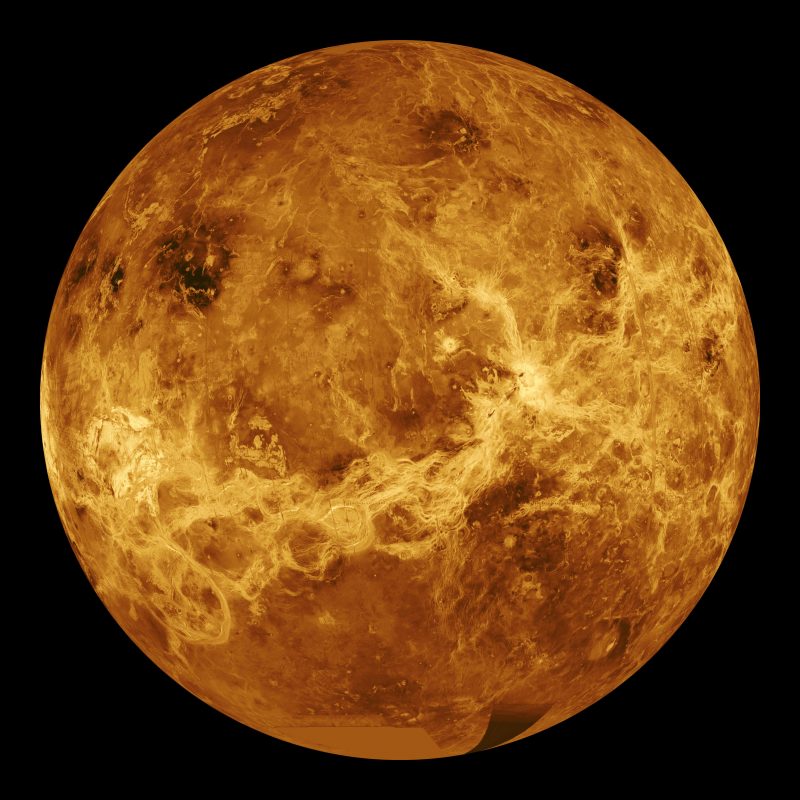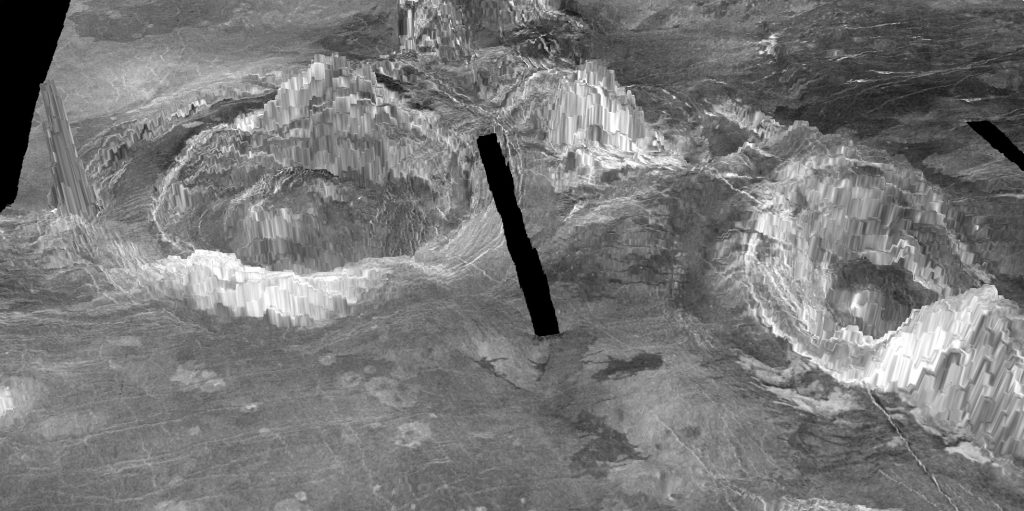Media
Transcript
The one thing that limits our ability to understand our universe, more than anything else, is money. Funding for space exploration limits how many spacecraft we can send to other worlds. Funding for space-related sciences limits how many Ph.D. scientists can do science as a career. Funding, more than anything else, is why there are very basic facts about other worlds in our own solar system that we don’t know.

Venus. It’s the planet closest to the Earth. We sent a spacecraft to it for the first time in 1962. The graduate students who worked on the mission are now all old enough to receive social security benefits.
The thing is, once we learned that Venus is a ghastly world of soaring temperatures and acidic rains, we kind of turned our back on this planet. Sure, we’ve used its gravity to help missions like Galileo, Cassini, and MESSENGER get to other planets, but the last U.S. mission dedicated to this planet was the 1990 Magellan mission, and globally, the only other probes have been the 2006 Venus Express and the 2015 Akatsuki. Exploring something covered in clouds that eats missions attempting to make it to the surface is hard and expensive. Going to the more distant Mars is easier, and there will be more missions launched to Mars during the current launch window than there have been missions sent to orbit Venus in the past two generations. This lack of missions means fewer data and also means less funding for jobs as the two are often related.
This lack of missions to Venus is why I say with annoyance that we now know, 58 years after the Mariner 2 Venus fly by, that Venus has active volcanoes. This basic fact, that Venus is still tectonically active, is new and exciting and has been way too long in coming.
A new paper in Nature Geoscience, with lead author Anna Gulcher, identifies 37 recently active volcanic structures on Venus. This radically changes our understanding of this world from one where we thought some global, cataclysmic event led to a massive resurfacing about 500-700 million years ago, to now thinking this world, much like our own, is undergoing constant resurfacing that prevents the buildup of craters on its surface.

According to co-author Laurent Montési: This study significantly changes the view of Venus from a mostly inactive planet to one whose interior is still churning and can feed many active volcanoes.
This work used new, detailed models of Venus to understand how the crown-shaped geology associated with mantle plumes change over time. The 37 still-active plumes they identified are clustered up in a handful of locations that would make ideal targets for future missions, including the 2032 launch of the European Space Agency’s EnVision mission.
The fact that we have so much left to learn about planets in our own solar system sometimes makes it hard to grasp how much we can know about planets in other solar systems.
There are three basic factors we can measure, with more or less accuracy, about planets in other solar systems. We can, in the right circumstances, measure how long they take to orbit, their mass, and their radius. This lets us then calculate things like a planet’s average density, which allows us to start to imagine how it may be structured. But an average density isn’t the same thing as an actual density. Take Earth, for instance. We’re a weird mix of rock and water surrounded by air. These factors all have very different densities, and we have every reason to believe that other planets are going to be just as weird, if not way weirder.
It is with this understanding, that the universe seems to like to make things weird, that scientists had a hard think about a trend they were noticing in heavy Earths and mini-Neptunes. These worlds aren’t that different in mass, but they are quite different in radius, with heavy Earths being about 1.3 Earth radii and mini-Neptunes being about 2.4 Earth radii.
In a new paper in The Astrophysical Journal Letters with lead author Olivier Mousis, a team of researchers suggests that the mini-Neptunes are worlds where the water has been heated to a supercritical state. A rocky core is surrounded by a dense atmosphere of water that is subject to a strong greenhouse effect that balloons out the water vapor around the world. Essentially, these are water worlds (minus Kevin Costner) where the water has been heated into a world-shrouding haze more hot and humid than a bad summer day in Atlanta.

The heavy Earths, however, may be normal ocean worlds or rocky worlds like Mars that have their oceans locked away in the ground or frozen into ice. If this is the case, both these worlds will have formed the same but have completely different fates based on how strongly (or not) they are irradiated by their stars. This is a nice piece of research that shows that since the same science is at play everywhere, we should see worlds with similar histories that diverge due to differences in the details.
The minor differences from object to object are part of what keeps observational astronomy so interesting. I can’t think of anything as unpredictable as the appearance of comets in our sky.
This year we’ve watched as Comet ATLAS self-destructed, as comet SWAN disappointed, and many of us, having come to terms with the loss of the large comets, have found ourselves startled to watch as comet NEOWISE has grown into a stunningly beautiful object in our sky. Currently, it is visible in the evening in the northwest and is just visible to the unaided eye if you are in a dark location and have great eyesight. In general, you want to use binoculars or a camera with a zoom lens. Some folks are also reporting it can be easily photographed with just an iPhone.

While I have managed to consistently not see it due to clouds, which is the story of my life really, we want to make sure that any of you with clear skies have the chance to see it. Currently, it is in the northwest, straight down from the bowl of the Big Dipper. It is about 30 degrees above the horizon, which is three fist-widths at arm’s length.
I strongly recommend heading toward a location with no trees on the horizon as the Sun sets. As soon as you start to see the stars in the bowl of the big dipper, begin sweeping the sky with binoculars or taking a series of photographs with a camera. You can take exposures a couple of seconds long without needing to track if you are using a lens that is 200mm or less.
While I’m looking at a new round of thunderstorms tonight, I hope all of you have clear skies. If you get any amazing photos, please send them to us, and we may share them on a future show. You can reach us at cosmoquestx@gmail.com.
Learn More
Volcanoes on Venus Are Still Active
- The University of Maryland press release
- “Corona Structures Driven by Plume-Lithosphere Interactions and Evidence for Ongoing Plume Activity on Venus,” Anna J. P. Gülcher, Taras V. Gerya, Laurent G. J. Montési & Jessica Munch, 2020 July 20, Nature Geoscience
Could Mini-Neptunes Be Irradiated Ocean Planets?
- CNRS press release
- “Irradiated Ocean Planets Bridge Super-Earth and Sub-Neptune Populations,” Olivier Mousis et al., 2020 June 15, Astrophysical Journal Letters (Preprint on arxiv.org)
- “Revised Mass-Radius Relationships for Water-Rich Rocky Planets More Irradiated Than the Runaway Greenhouse Limit,” Martin Turbet et al., 2020 June 9, Astronomy & Astrophysics (Preprint on arxiv.org)
How to Observe Comet NEOWISE
- Sky & Telescope article (July 9, 2020)
- EarthSky article (July 21, 2020)
Credits
Written by Pamela Gay
Hosted by Pamela Gay
Audio and Video Editing by Ally Pelphrey
Content Editing by Beth Johnson
Intro and Outro music by Kevin MacLeod, https://incompetech.com/music/


 We record most shows live, on Twitch. Follow us today to get alerts when we go live.
We record most shows live, on Twitch. Follow us today to get alerts when we go live.